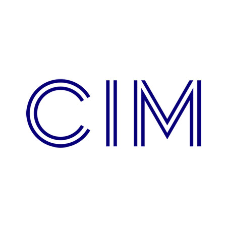Guest post provided by Chris Ashworth
Broadly speaking there are two main market sectors in construction: public sector, projects that are driven by central government and local government, and private sector, projects that are independently financed, as well as public projects with private finance.
The Public Sector Construction Client can be an important product influencer and is worthy of attention. In 2016 construction was the largest public sector expenditure by volume and value. And at a local government level construction is the single largest category of procurement expenditure. Here are some facts to consider:
• Almost 16% of UK construction spend is by the public sector.
• The NHS is the largest capital construction client in the country, with a construction pipeline of £5.7bn.
• The public sector is broadly split between central government departments (e.g. MOD, MoJ, NHS, DfE) and local government.
• Public sector procurement is subject to a legal framework which encourages free and open competition and value for money. “The best mix of quality and effectiveness for the least outlay over the period of use of the goods or services bought”.
• Since April 2016 it is a requirement that all central government projects are designed using BIM.
1. Select your target sector
The route to becoming a supplier, be it as a product manufacturer or a contractor, can be long and complicated. But once there it can be very rewarding as there are numerous high value contracts let. But do not think of this as one client, rather as a number of similar but different clients. As with any other sector, you need to start by considering what needs your products or services are particularly suitable to meet and hence the sectors they are most suitable for. Having selected a target sector then get to know how it is structured and where you need to focus attention.
2. A commitment to transparency can help
Although at times dealing with the public sector may feel like wading through mud, there is a commitment to transparency which means there is a lot of information available in the public domain – if you know where to look! Possibly the starting point is the Government Construction & Infrastructure Pipeline (GCIP), which lists all of central government’s capital projects for 3 or 4 years ahead. Barbour ABI has been collecting, collating and publishing the Government Construction & Infrastructure Pipeline since September 2012.
You can also find details of the main spending departments’ organisations on the web. Many of these will have a property arm such as the NHS Property Services, Education Funding Agency and the Defence Infrastructure Organisation.
These organisations will publish their own procurement rules and may have quite detailed requirements, such as the Building Bulleting which can be found on the DfE website.
3. Public Sector Frameworks
Many public sector bodies use framework agreements to procure their projects. High profile groups include Scape, ProCur22 and Crown Commercial Services. In most cases there will be a framework of contractors who will be appointed to construct a package of projects – often on a Design & Build basis. But depending on the client there may also be architects as part of the framework.
Often there will be design repetition, so if you can get your product specified there is a good chance that it will be used repeatedly.
4. Government as a driver for change
Possibly the most significant influence on change from the government has been the mandate that from April 2016 all central government projects should be designed with BIM. This acted as a catalyst for the industry to start the adoption of BIM, however after that initial drive, the impetus from the government has reduced with it reported that some government departments don’t understand the concept of BIM.
Another area of influence is sustainability. In this case central government seems to have lost interest in sustainable construction, having previously required BREEAM Excellent via the Office of Government Commerce. However, many local authorities have Green policies which continue to require demanding construction standards.
5. Reap the benefits
Getting involved in public sector construction can reap rewards, as this sector often represents numerous high value contract lets. And once your product is specified there is a good chance that it will be used repeatedly, as projects and designs are rolled out. Remember though to position yourself as BIM ready, know of the sustainability credentials of your product and know how procurement works for your chosen sector, so you can influence the framework of contractors involved.
Competitive Advantage have developed a Understanding the Public Sector Client persona which is available for you to purchase and download.
Further Information
Promoting your company and building products with Barbour Product Search can help to increase your visibility to the full specification audience. Email editor@barbourproductsearch.info for more information.
Sign up to the Competitive Advantage newsletter for an overview of construction market activity as well as construction sales and marketing advice.
Chris is a specialist in specification strategy and founder of Competitive Advantage Consultancy which specialises in market research and training for the construction industry. He is a member of the BIM4M2 steering group and Deputy Chair of the organising committee for CIMCIG, the Chartered Institute of Marketing’s Construction Industry Group.
Related Blog Articles



![Communicating with specifiers & developing a personalised persona [EVENT] Communicating with specifiers & developing a personalised persona [EVENT]](/20/blogentry/00/04/48/th382.png)







![A strategy for communicating with specifiers [EVENT] A strategy for communicating with specifiers [EVENT]](/20/blogentry/00/03/82/th382.png)